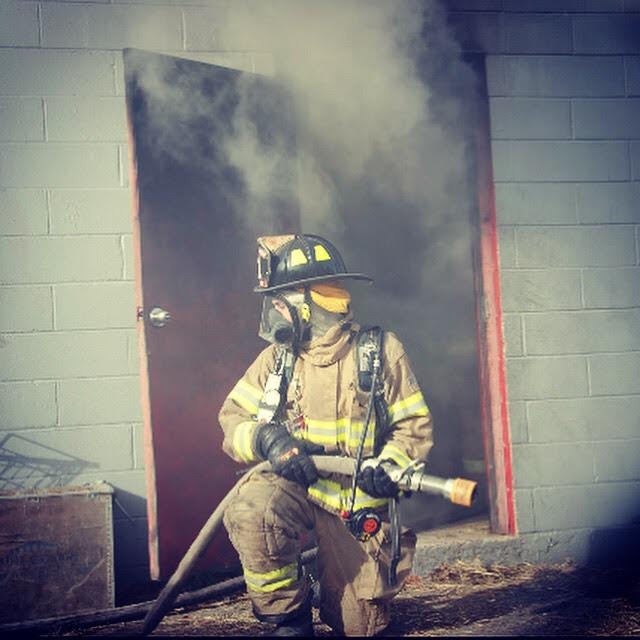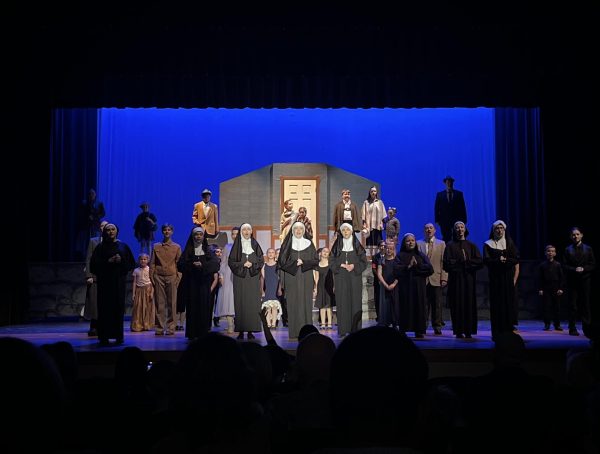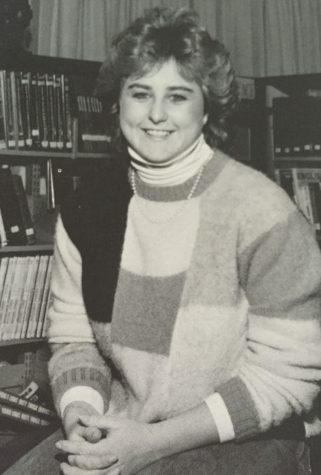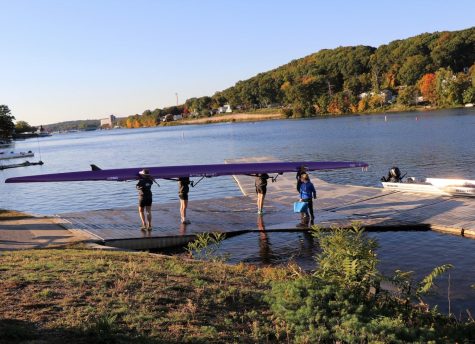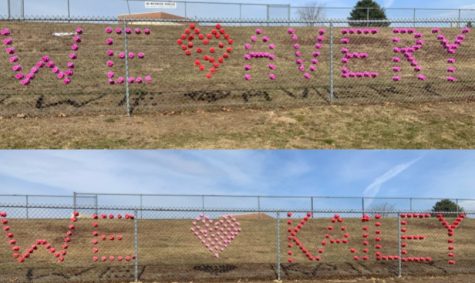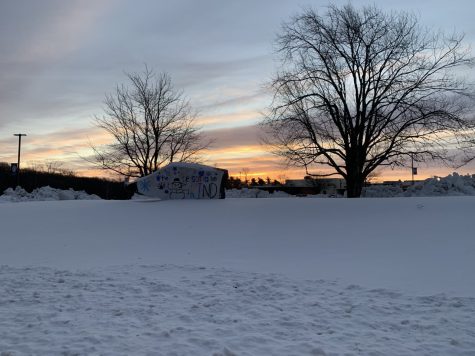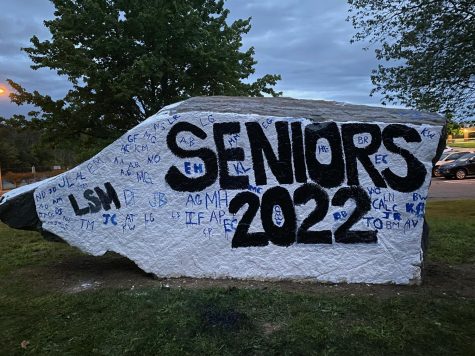Day in the life of a First Responder: Capt. Michael Haaser
February 4, 2016
“Burlington Fire and Ambulance Personnel. Signal 23 on a hot response.” Tones sound.
“2 Car Motor Vehicle accident. ”
“Car 40 Responding to the scene,” Emergency Medical Service Capt. Mike Haaser relays to dispatch, red lights and sirens on, and radio channels scanning.
Haaser, a 23-year-old Burlington first responder and Lewis S. Mills graduate, floors it down Route 4 to get to the scene of the accident. He punches the horn, over and over again, at cars.
“Get the hell out of the way,” Haaser yells.
What should I be prepared for, Haaser thinks to himself.
As a selfless, astute and experienced first responder, paid Bristol and Burlington EMT and a recent Fire 1 graduate, Haaser knows to always prepare for the worst.
“It’s crucial to be ready for whatever is being dispatched,” he explains. “Sometimes you get limited information, leaving you to get creative and create an image in your head of what the scene might look like.”
Still in hot pursuit, he says, “You can never be over prepared … one day it could say signal 50 (a fire) and be a garbage bag on fire. But another time it could go out as smell of smoke, unknown, and BAM (it’s a) fully engulfed structure fire.”
Burlington’s number one ambulance, 20 Unit-1, has arrived prior to Capt. Haaser, and its driver provides a quick size up of the atrocity. Little did the paramedic know that the information he provided would give Haaser enough information to begin making life-saving decisions.
Pulling onto the scene, Haaser immediately takes command. Command can be given to the higher ranking officer at any time. Haaser, being the first due officer on scene, assumes charge.
What he sees next is far different than what he anticipated. He had been told one rolled over vehicle and tractor-trailer had been involved. Automatically assuming the car was flipped over, he was extremely surprised to see a massive GMC moving truck on its side, with three men standing outside of it. And the car he thought was flipped turned out to be a lifted Jeep with four critical patients.
Busy at work the paramedic begins seeing patients, seven to be exact. Right away Capt. Haaser knows he needs to call in mutual aid. He calls for surrounding towns to send ambulances ASAP. Meanwhile Haaser, a skillful EMT with prior knowledge of this type of accident, begins to set up a “triage” system. In medical emergencies, it uses “the assignment of degrees of urgency to wounds or illnesses to decide the order of treatment of a large number of patients or casualties,” according to well-established protocols. Haaser is following the START system: Simple Triage and Rapid Treatment. In START, victims are grouped into four categories, depending on the urgency of their need for evacuation. If necessary, START can be implemented by persons without a high level of training. In this case, and Haaser has basic-level EMTs tag patients. As each ambulance arrives on scene, they would be directed to start examinations and transporting the most drastic victims first. This advanced triage system involves a color-coding scheme, according to established protocol:
“ Red tags – (immediate) are used to label those who cannot survive without immediate treatment but who have a chance of survival.
Yellow tags – (observation) for those who require observation (and possible later re-triage). Their condition is stable for the moment and, they are not in immediate danger of death. These victims will still need hospital care and would be treated immediately under normal circumstances.
Green tags – (wait) are reserved for the ‘walking wounded’ who will need medical care at some point, after more critical injuries have been treated.
White tags – (dismiss) are given to those with minor injuries for whom a doctor’s care is not required.
Black tags – (expectant) are used for the deceased and for those whose injuries are so extensive that they will not be able to survive given the care that is available.”
Soon ambulances begin showing up, one from Harwinton, two from Burlington and one from Canton.
Meanwhile, Rescue 9 of the local Burlington Volunteer Fire Department arrives on scene radioing Haaser, asking where to park. Most officers would tell them to park somewhere where they can get things on and off the truck the fastest. Haaser has already planned out the location for the fire fighters to go. He has the rescue truck park sideways, so that any cars that blow past the staged fire police would hit Rescue 9 before crashing into the scene of the accident. He also has everyone, including Rescue 9, however, park enough out of the way to bring more ambulances in and out.
Where and how Rescue 9 is commanded to park doesn’t get any more acknowledgment, but it is such an vital minor detail. It allows for the accident to run more smoothly, but also it will keep workers safe. These little things that Capt. Haaser determines, along with major decisions, can save a life, or lose a future.
As firefighters offload from the truck the officer immediately asks, “What do we have?”
Haaser sternly replies, “We have one car extrication on the driver’s door needed, patient is unresponsive, black tagged.”
The firefighter grabs his team and gets to work on the extrication. Next Haaser grabs a few more firefighters and commands: “Stabilize that car.”
He knows that if there is any chance of the patients surviving, the car must be stabilized, or else it could cause more damage to the victims, or any firefighters working on the car.
Next Lt. Nate England arrives, who has taken Engine 4 by himself. He rushes off the truck and pulls a line of hose off to set up just in case the car catches fire.
Meanwhile, Lt. Devon Yudelson and his rescue squad work diligently to cut the Jeep, freeing the black-tagged women.
Now Haaser makes one of the hardest decisions a first responder can make, but he has to within minutes. Haaser is quick to have her covered with a sheet. He makes a few private calls to get permission to determine the driver as a “D.O.A.” Signal 9. Dead on arrival.
He already knows there are too many patients.
“The red tags come before the black, it’s upsetting but it’s how life must go on,” he explains – meaning save the saveable.
On this particular accident, Haaser expected to arrange transportation for seven victims. By the end of the call there were two patient refusals, and one green tag from the large GMC dump truck, three red tags and one black tag.
As the accident scene wraps up, Haaser sends home the trucks, makes sure the ambulances have transported patients, calls tow trucks and helps police to recreate the crime scene. Hours later he terminates command and drives away from the once-horrific, and now returned-to-normal Route 4, thanks to his quick thinking and competent command. Haaser drives home, no blue lights, no speeding, no more scenarios in his head. Later that day hundreds of people will drive back and forth on the that same road where lives changed forever, and where first responders worked to their fullest efforts to save lives. Yet, through all the chaos and bloodshed, the stress and responsibilities, it is just another day for first responder Haaser. He will not know what happens to the lives he saves, or the families dealing with loss. He carries on with the rest of his day, unaltered, and unphased. As a volunteer, Haaser makes $6.50 for any call he attends. But that is not why he does it.
“I do this because,” he says, “I know it sounds stereotypical, but in all honesty, to save lives and help as much as I can.”
